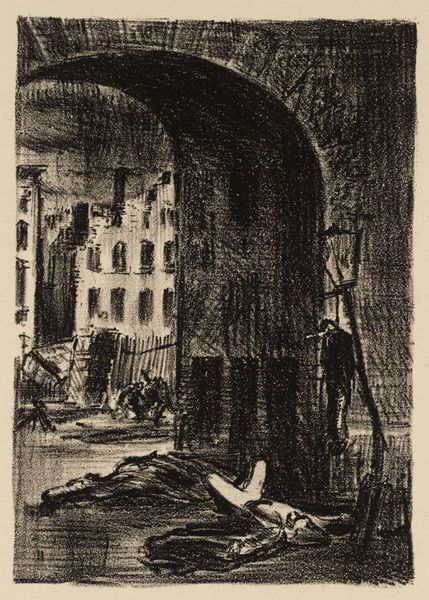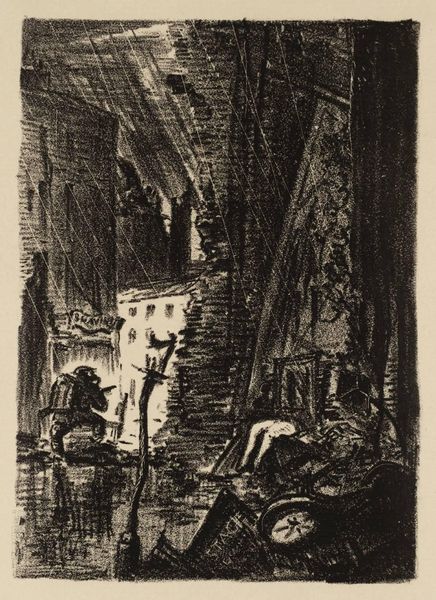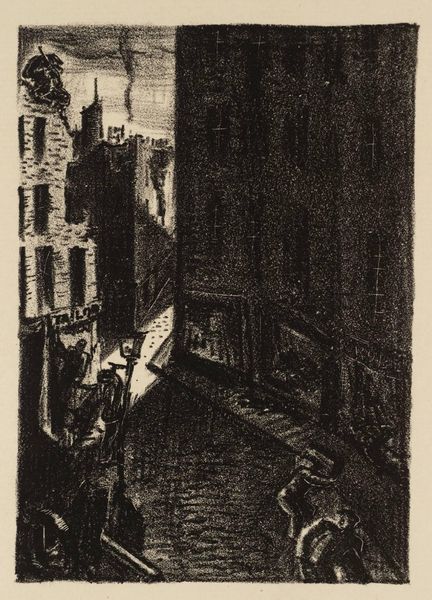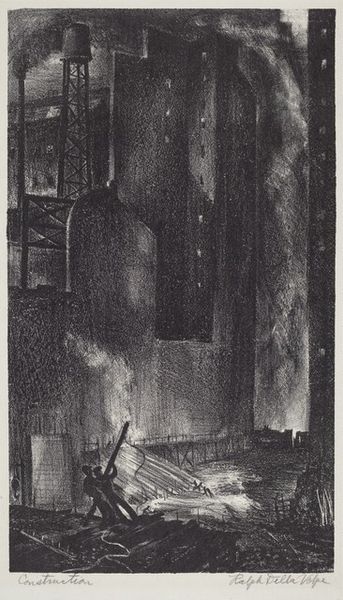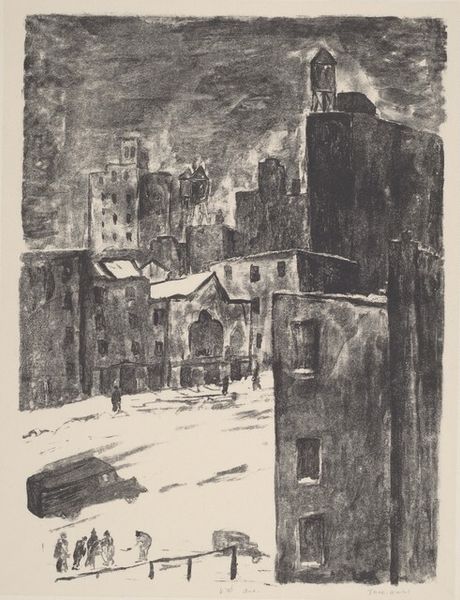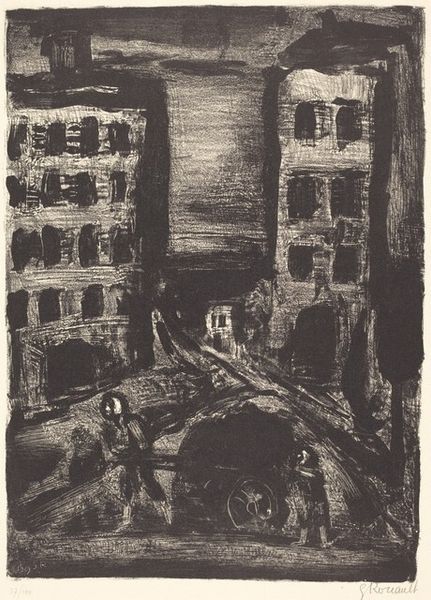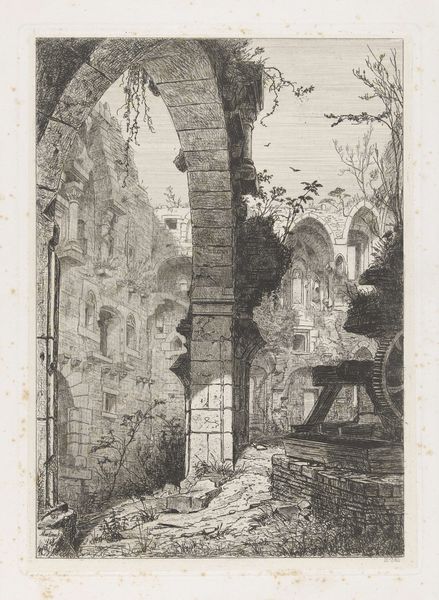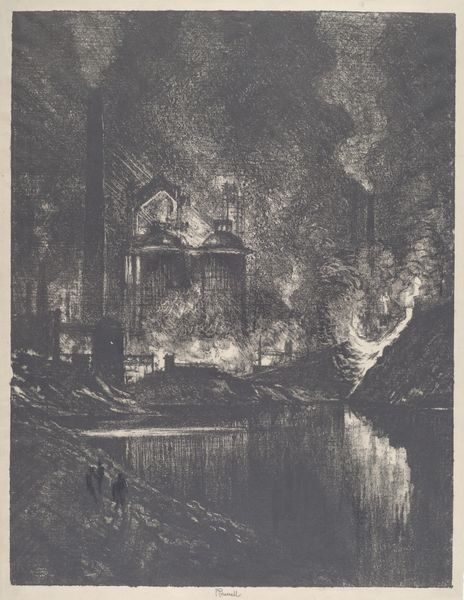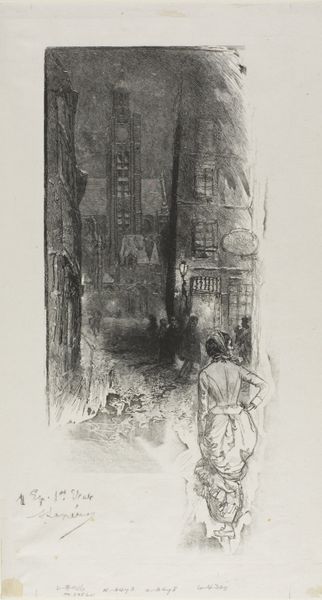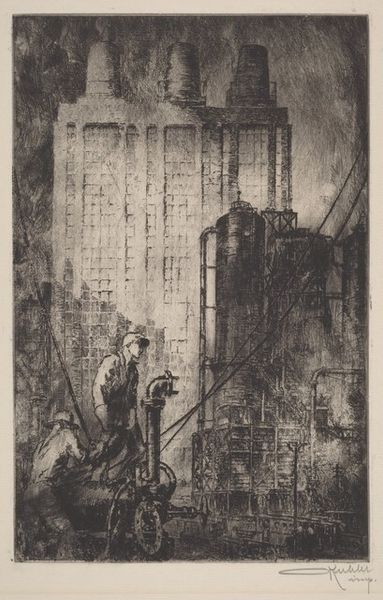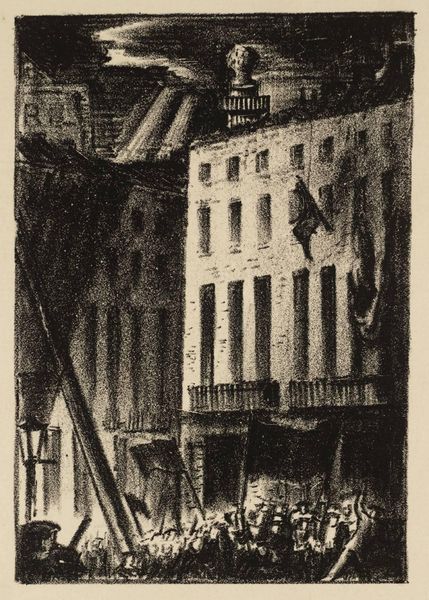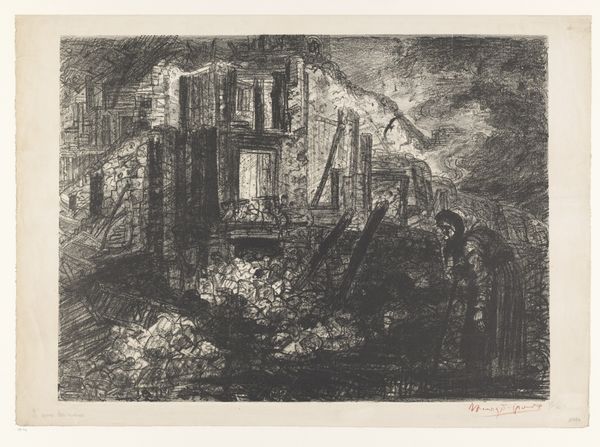
Dimensions: image: 133 x 95 mm
Copyright: © The estate of James Boswell | CC-BY-NC-ND 4.0 DEED, Photo: Tate
Curator: This is "The Fall of London: The Colosseum" by James Boswell. Editor: Bleak! It gives me such a feeling of overwhelming urban dread, rendered in what looks like crude strokes. Curator: Indeed. Boswell, born in 1906, used these stark, almost brutal, printmaking techniques to convey powerful social commentary, especially about the effects of war on the working class. The material itself speaks volumes. Editor: The Colosseum, usually a symbol of Roman grandeur, feels transplanted and corrupted here. See how that dark flag looms, and how figures scramble in the foreground. It evokes not triumph, but a disturbing collapse of order. Curator: Exactly. Consider the social context—the looming threat of war and its impact on societal structures. The print becomes a testament to the fragility of human achievement. Editor: Seeing those forms, their terror feels timeless, doesn't it? Even now. Curator: Yes. A poignant reminder of what we risk losing. Editor: A stark vision, powerfully conveyed.
Comments
tate 7 months ago
⋮
http://www.tate.org.uk/art/artworks/boswell-the-fall-of-london-the-colosseum-p11660
Join the conversation
Join millions of artists and users on Artera today and experience the ultimate creative platform.
tate 7 months ago
⋮
The Colosseum is one of eight small lithographs Boswell made in 1933 describing The Fall of London. Ron Heisler believes that they were originally conceived for a book by Frank McIlraith and Roy Connolly called Invasion From The Air which describes a Fascist invasion of England (information supplied by Ron Heisler August 2003). The theme of the book, which was published in 1934, is reminiscent of Boswell’s prints, which illustrate both popular uprisings in the City of London and horrific scenes of the city in ruins. The scene is one of violence and conflict as armed men shoot at the advancing crowds of people waving flags and banners. A large portrait hangs on the wall of the ruined building the demonstrators have targeted. St Paul’s rises up in the background, a symbol of the stability and order that is being threatened. Boswell may have chosen the subject as a result of the a march which had taken place in London in October 1932, one year before this print was made. One hundred and fifty thousand people crowded in to Trafalgar Square to present a petition to Parliament calling for the abolition of the Means Test. It is likely that Boswell attended this event, and he contributed a number of cartoons to a book titled Hunger March Cartoons which was published in 1934. The title of this lithograph is ambiguous as there is no building with this name in the City of London. Boswell, however, may be alluding to the Roman colosseums which were built as places of spectacle and frequently entertained crowds with tournaments.
